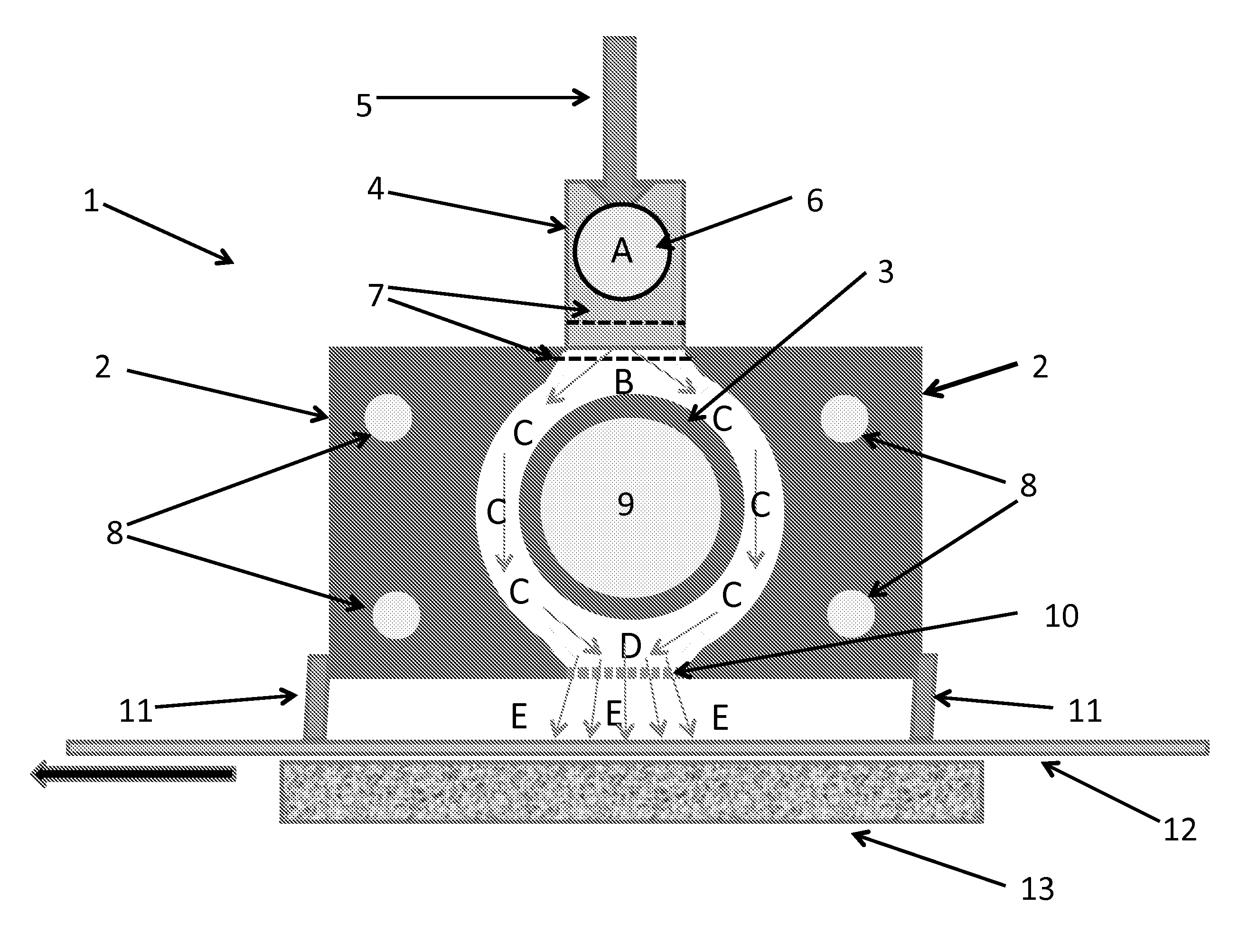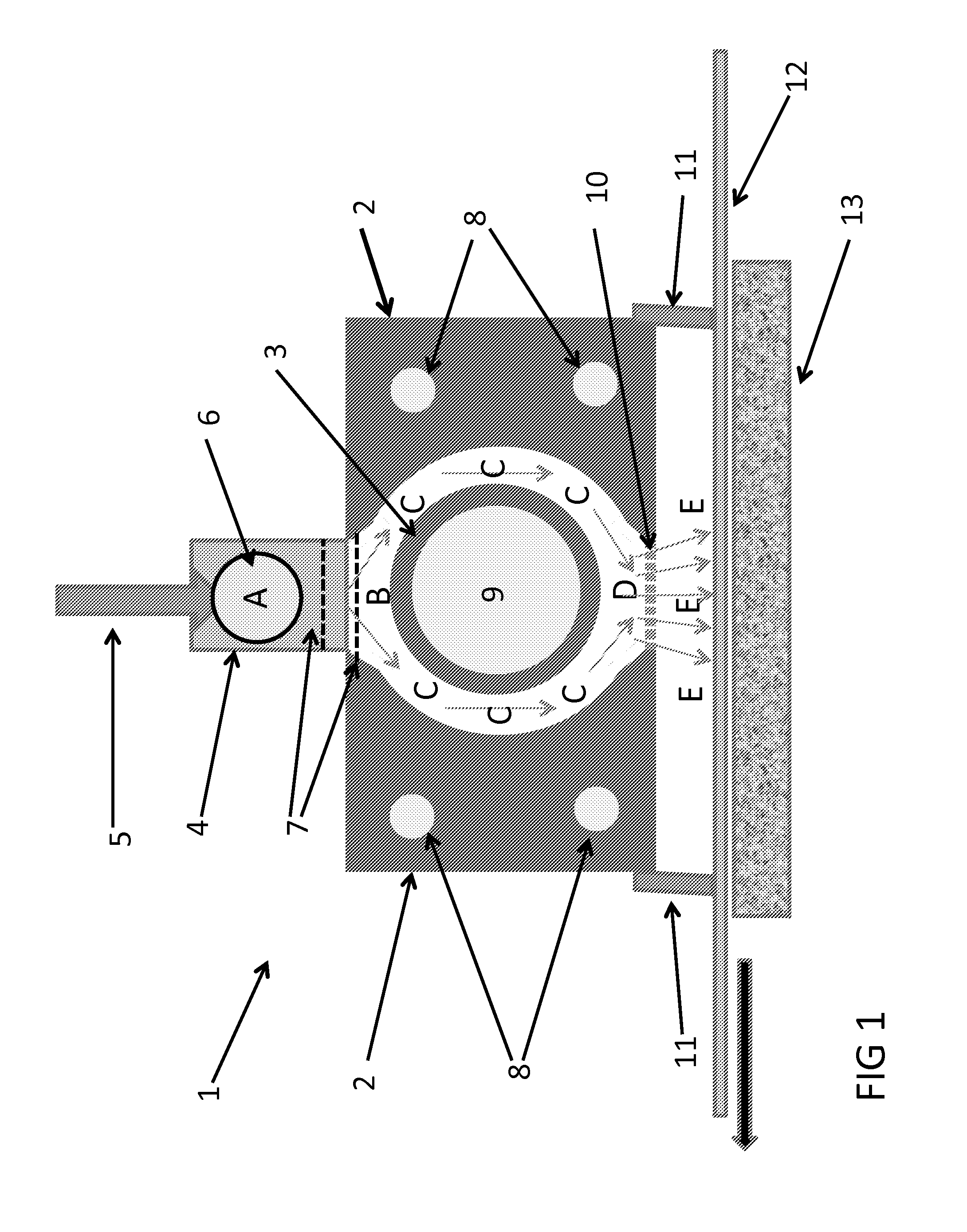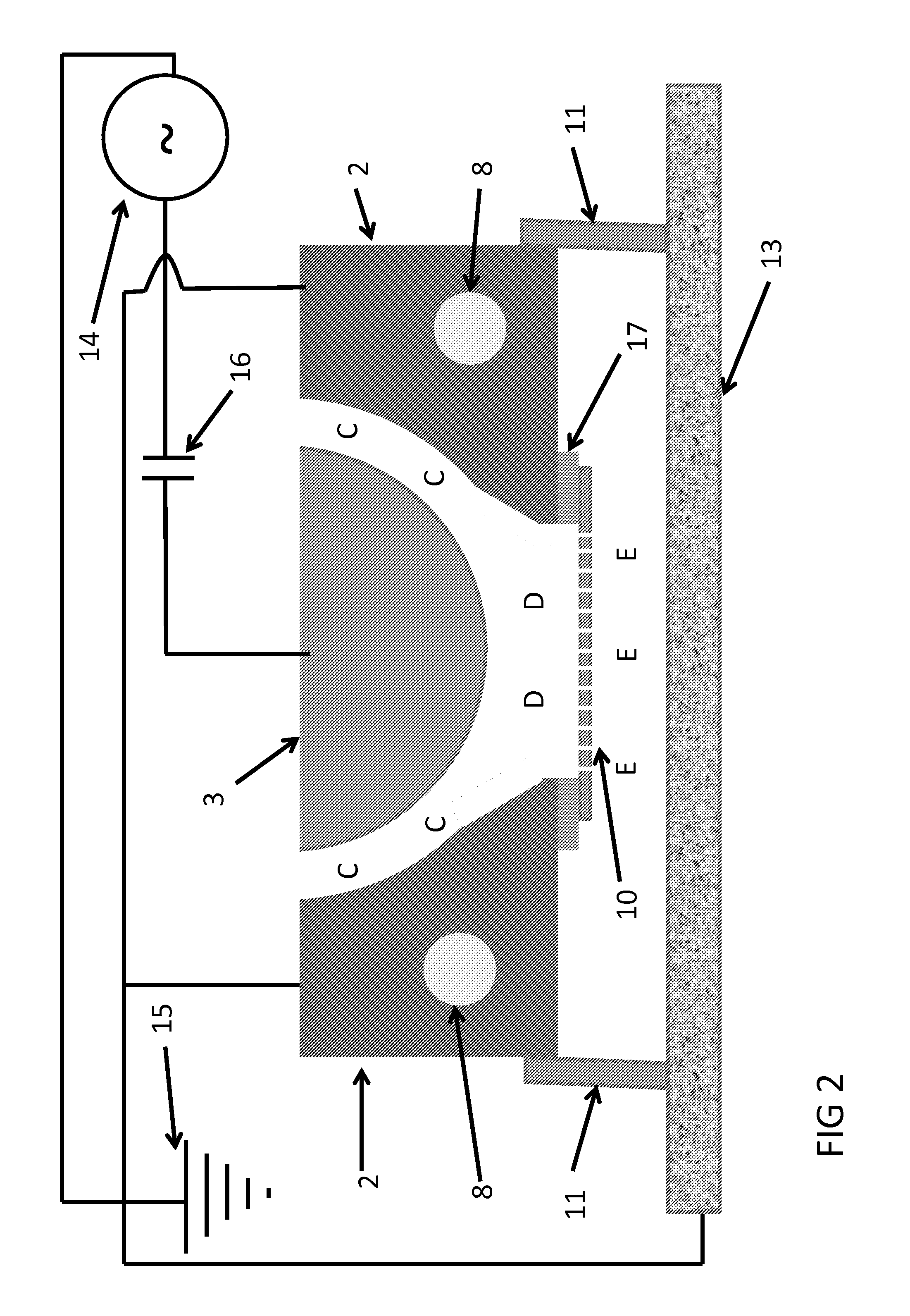Typically, this results because the
excited state metastable is in a different spin state than the
ground state species and so cannot release its
stored energy by the simple emission of light.
However,
direct exposure of the workpiece to the plasma generation region can have undesirable effects, such as promoting the out-gassing of contaminants from the workpiece, including
water vapor,
monomer vapor and other volatile chemicals from the workpiece.
Release of these undesired species may interfere with the intended
chemical reaction(s) and the contaminant species may also cause the plasma to arc.
The difficulty in downstream
plasma processing is the need to transport the active
chemical species to the substrate before they extinguish due to recombination and other surface and gas-phase reactions.
Because of this,
downstream processing can be expensive, especially when expensive noble gases such as
helium are used to generate the plasma and to increase the linear velocity of the gas flow.
In summary, in-situ
processing reduces the gas flow required for materials treatment, but introduces problems with plasma-initiated out-gassing and creates a susceptibility to arcing and consequent substrate damage, whereas
downstream processing minimizes arcing issues and out-gassing, but requires a high gas flow for efficient treatment, which can be expensive.
For in-situ
plasma treatment processes, high power plasmas increase processing speed, but can also create increased
vulnerability to arcing and substrate damage, as well as undesired chemical reactions from the increased substrate out-gassing.
Even subtle changes in the thickness of the substrate caused by folds, seams or weave defects can result in arcing for a high power, in-situ process.
For downstream processes,
higher power plasmas offer only increasing benefits with no significant negative results, but there remains the problem of transporting the active species to the
substrate surface.
The need to have a high power
atmospheric pressure plasma source that also operates with a low gas temperature (i.e., <75 C) introduces yet another issue, since the ultimate result of adding energy into a gas is an increase in its
kinetic energy, and therefore its temperature.
The use of a
dielectric cover on the
electrode still acts as a barrier for heat removal because
dielectric materials are generally poor heat conductors.
Because of this, all atmospheric pressure plasmas having a
dielectric cover on the electrodes will have difficulty removing heat from the plasma, even if the electrodes are water-cooled.
These plasmas are also limited in average
plasma density due to the presence of the dielectric cover and the impedance to current flow caused by the dielectric cover.
However, since a screen
electrode cannot be water-cooled to aid in heat removal, the gas flow can be hot.
This means that either a high
helium flow rate is needed or the transit distance to the substrate must be very short.
The
limiting factor for high power plasma generation becomes the design capability for holding the ground
electrode tubes perfectly straight: variations in the gap between ground electrode tubes and the planar, rf electrode will cause the plasma density to be highest wherever the gap dimension is shortest because the
electric field will be greatest at these points.
The difficulty in using this invention is that the ground electrode tubes must be held perfectly straight, which is hard to do for a long section, such as 72″ width.
Thus, in practice, large units of this design are prone to arcing issues if not properly manufactured.
In addition, the need to efficiently water-cool the full length of the tubes (which is promoted by large
diameter tubing) and the need to minimize the
transit time of the active species from the plasma to the workpiece (which is promoted by small
diameter tubing), are in conflict.
If the
water flow is not equal through each of the tubes, or if the
water flow is not sufficient to
handle the power of the plasma, heating of the tubes by thermal exchange with the plasma will result in expansion and deformation, which may lead to arcing as the electrode gap is changed.
This can happen if the gas flow that is compressed between the ground electrode tubes is not uniform or is not sufficient to prevent back-flow of gases due to gas reflection from the workpiece.
Even trace contaminants inside the plasma can cause arcing if they change the
plasma chemistry.
In-situ treatment of thick substrates, meaning more than 3-4 mm, remains problematic using the approach of US2006 / 0048893 and other in-situ, non-DBD plasmas.
As is apparent from the foregoing, in-situ processing offers the potential benefit of rapid substrate treatment due to the
high density of active,
chemical species that can be achieved, but suffers from problems of arcing, especially for high power plasmas.
In addition, it is difficult to apply in-situ processing methods to thicker substrates.
Downstream
plasma processing offers a solution to the arcing problem and can treat thicker substrates, but is expensive due to the need for high gas flow rates to transport the active species and / or long
exposure times. Therefore there is a desire to provide an improved
plasma treatment process and apparatus that combines the advantages of the downstream plasma with the advantages of an in-situ plasma.
 Login to View More
Login to View More 


